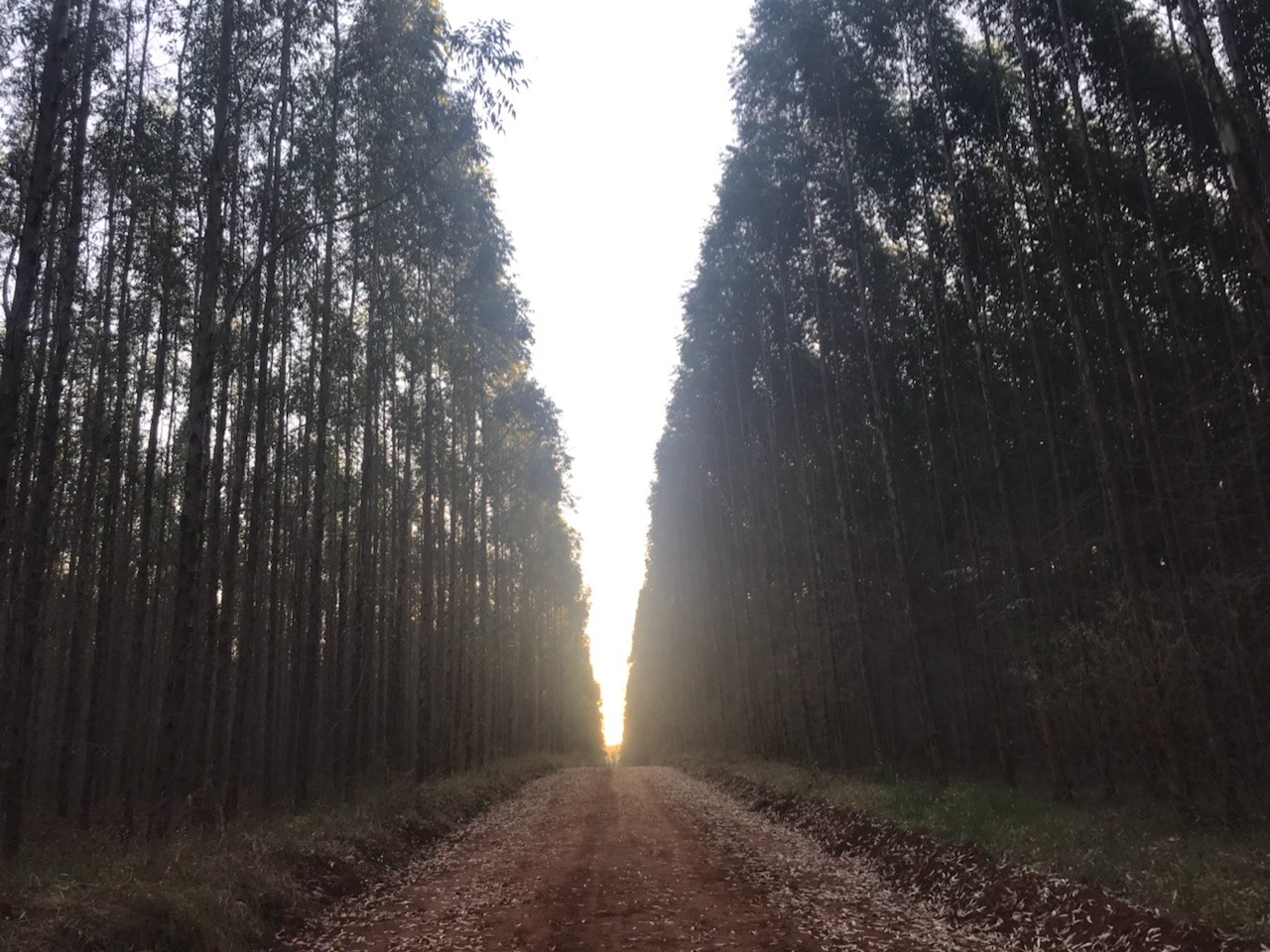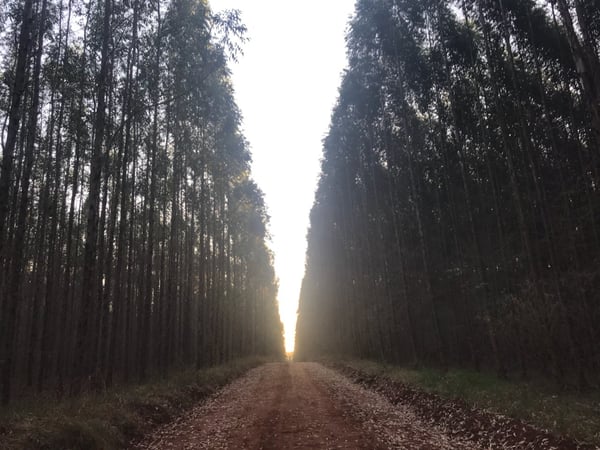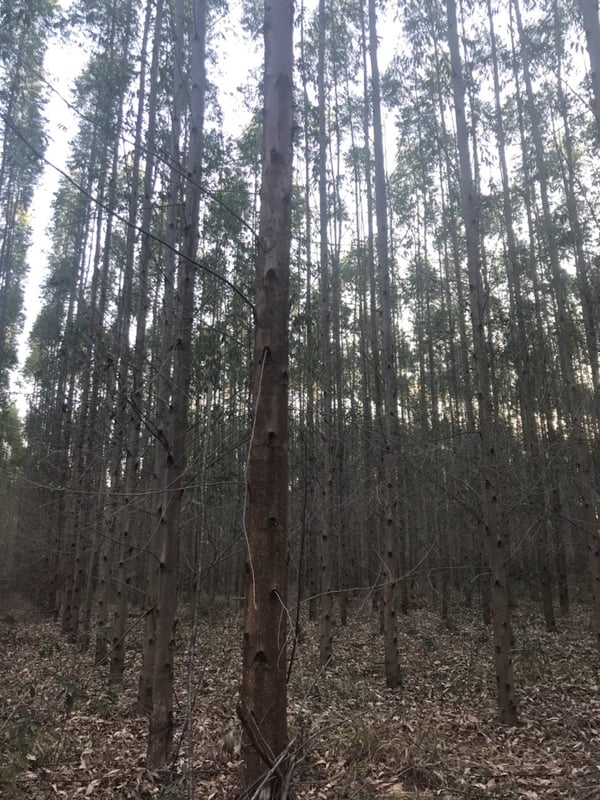5 min read
The Advantages of Genetic Improvements for Pine and Eucalyptus Plantations
Jay Engle : October 8, 2018

Forest2Market's Jay Engle and ArborGen's Rafael De La Torre partnered to produce the content in this blog post with a single question in mind: Do modern genetic improvements in tree seedlings result in more profitable timber harvests and more valuable timberland and if so, can Forest2Market’s transactional timber price database prove it? For this project, we chose to analyze ArborGen’s growth data from clonal eucalyptus plantations in Brazil, as well as Forest2Market’s delivered price data for Brazil.
It may seem counterintuitive, but all clones are not the same. On one hand, the definition of a clone is that each individual is genetically identical. On the other hand, you need only look at a specific species to understand that all trees are not genetically alike. Take the loblolly pine, for example, which has a large natural habitat range covering much of the US South—stretching from Texas across the Gulf and Atlantic coastal plains and Piedmont all the way to New Jersey.
As you can imagine, with such a wide range and all the associated environmental conditions, loblolly genetics exhibit a great deal of variation. One tree might be tall and straight, and another might be forked. The genetics and clones of one may differ significantly from the genetics and clones of another. Today, that genetic variation is being used by landowners to the advantage of both themselves and their buyers.
Historical Perspective
Over the last 50 years or so, research has shown that natural stand growth and yield could be greatly enhanced through plantation management. To do this, seed had to be collected and sown in nurseries to produce seedlings for planting, and this process uncovered the importance of seed source genetics. The two important factors in identifying seed sources were 1) getting seed from the favorable geographic location (a seed's provenance) and 2) identifying and preserving the individual tree traits.
Early in this process, the genetic characteristics of specific trees were unknown and so seed was collected from individual trees that had a favorable appearance. Trees that were larger, straighter, and that had fewer and smaller branches than most of the population were sought out, but all that really could be said about those trees was that they “looked better” than others. These external characteristics are defined as the tree’s phenotypic characteristics, and this process marked the start of using genetic variation for advantage, which opened the door to significant research efforts into the genetics of selected trees.
Tree improvement programs were the next phase in furthering the use of genetic variation for advantage. These programs expanded the wild tree selection and established replicated tests across the entire range. The true objective of these programs was to identify the trees with truly superior genetic properties that were consistently passed on to the next generation, as well as the ideal geographical zones in which they performed well. The improvement programs were very effective and led to the establishment of seed orchards that produce high quality seedlings for plantations.
While those initial tree improvement programs advanced using genetic variation to advantage plantation management, they continued well beyond those 1st generation orchards; the programs are now in the 4th cycle of testing. As you can imagine, techniques and methods have changed significantly over time. In the early days, only the seed used in the genetic tests were produced by controlled pollination with the female flowers being enclosed in clear plastic tubes to keep out ambient pollen, and researchers only allowed pollination to be the result of injected pollen from a tree selected in the program. Today, mass controlled pollination (MCP®) is used as a method for preventing pollen contamination and producing seed of known genetic parentage.
The Next Generation
The story of loblolly pine plantation management is an excellent and well-known example of where genetic improvement has been used to advantage the tree seedling. The improvement in growth and yield, disease resistance and wood properties has been significant. According to one Forest2Market study, Historical Perspective on the Relationship between Demand and Forest Productivity in the US South, seedlings established in the 2000s have a fourfold increase in growth compared to seedlings established in the 1950s. Genetic improvement played a large role in that increase and the success of the forest products industry in the region.
Currently, work is being done with clonal propagation of both loblolly pine and Eucalyptus, though the Eucalyptus research is more advanced. ArborGen, a company that specializes in advanced tree genetics, prepared a presentation in August 2017 titled “The Impact of Genetic Improvement on the Forestry Value Chain – Clonal Eucalyptus Plantations in Brazil.” This presentation clarified the fact that using the proper clonal material in a plantation can have significant gains for the landowner and end-use facility.
 Eucalyptus plantation in Brazil. SOURCE: ArborGen
Eucalyptus plantation in Brazil. SOURCE: ArborGen
 Eucalyptus plantation in Brazil. SOURCE: ArborGen
Eucalyptus plantation in Brazil. SOURCE: ArborGen
The presentation used three Eucalyptus clones to provide examples of how genetic differences can affect performance based on the desired outcome. The following table is an abbreviated summary of some parameters for the three clones. Clone 1 is actually ArborGen’s control clone used in their testing, while the other two clones were selected for their suitability to certain end-product production processes.
 MAI – Mean Annual Increment M3 – Cubic Meter BD – Bone Dry MT – Metric Tonne Ha – Hectare KW - Kilowatt
MAI – Mean Annual Increment M3 – Cubic Meter BD – Bone Dry MT – Metric Tonne Ha – Hectare KW - Kilowatt
While all the clones have very good growth characteristics (Mean Annual Increment or MAI), clear differences can be found in growth and density (specific gravity). Clones 2 and 3 are clearly superior to the control (Clone 1) with Clone 3 holding the advantage in growth and Clone 2 having higher density. Depending on what products these clones will be used to produce, these differences may present an advantage. For pulp and paper production, Clone 2 would be superior, while Clone 3 is advantaged for energy production. The pulp yield for Clone 2 is about a third higher than the control and requires 16% less raw green wood per metric ton of pulp produced. Clone 3 holds around a 25% advantage over the control for energy production.
One way of evaluating the value of these advantages is to consider Clone 1 as the current base for Eucalyptus pulpwood price and apply the advantages of Clones 2 and 3 to the May 2018 Forest2Market delivered price for Brazil of R$102.65/MT (US$28.32/MT). Doing so suggests the advantaged clones would have a value in the range of R$128.31 - 133.44/MT (US$35.40 - 36.82).
The advantages of being able to choose seedling genetics to match production requirements are clear. For the landowner, profitability can be improved by using clones with higher growth capacity, which can also lead to lower establishment costs. Pulp and paper mills would gain by having to harvest less area due to the higher growth rates, and the pulp mill yield would improve from the higher density. Similarly, energy facilities would also gain by being able to harvest less area and retain a better caloric content of the harvested material. The more detailed analysis used in the ArborGen presentation summarized the gains in this manner:
- Landowner: 390%+ increase in profitability (from Net Present Value -$428/ha to $1,240/ha) and a 40% reduction in costs managing a second rotation by coppicing (selecting new shoots from their stump)
- Pulp Mill: a 16% reduction in wood fiber cost per cubic meter
- Energy Producers: a 19% reduction in the cost of biomass per kilowatt-hour
While it would be easy to assume that clone 1 is inferior to the other clones—and it is in some traits— it is not necessarily the case across the board. Clone 1 might actually have superior wood characteristics from a solid wood aspect, for instance. Clonal selection and deployment is highly dependent upon the end-use of the wood raw material and on landowner and/or mill facility preference.
With high levels of potential gains, genetic tree improvements—whether from traditional breeding programs or from clonal development—are well worth using to maximize the performance of forestry programs.





